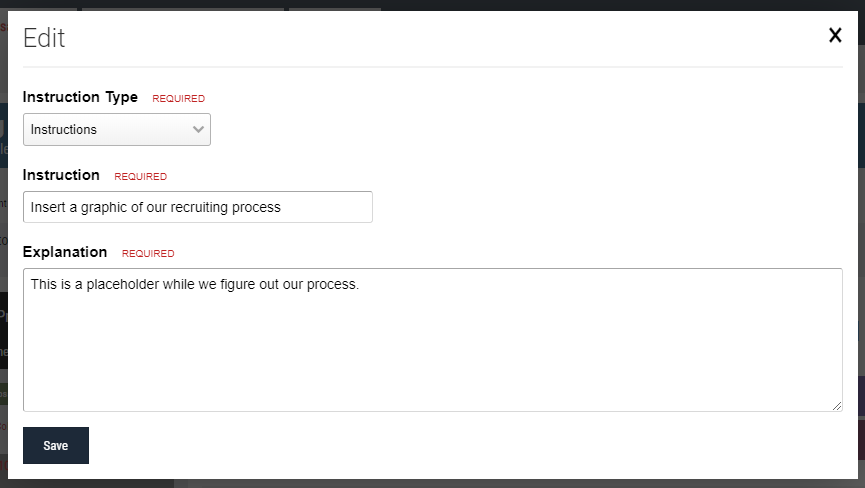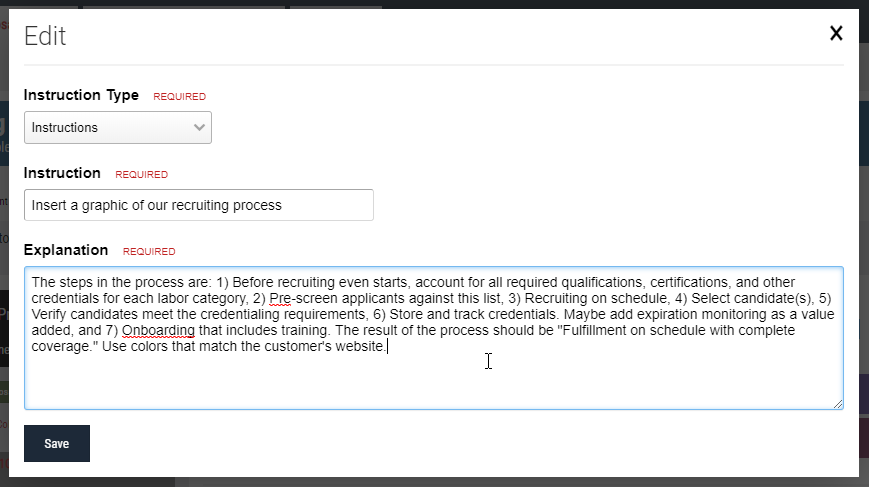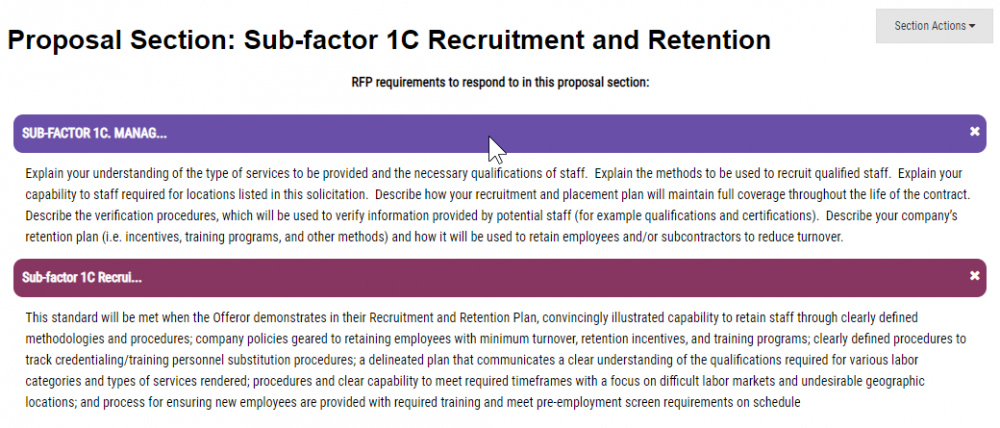How to create proposal graphics for those who can’t draw
Identifying graphics for proposals requires no creativity or special skills whatsoever.
Creating proposal graphics can be thought of in two parts. My friend Mike Parkinson of the 24hr Company refers to them as:
• Conceptualization. Figuring out what to communicate visually and what the graphic needs to communicate.
• Rendering. Drawing the graphic.
Rendering is where all the artistic skills are required. But conceptualization is where you figure out what should go into the graphic and what the graphic should accomplish. Conceptualization does not require any artistic abilities. Conceptualization can include drawing a rough sketch or PowerPoint, but it doesn’t have to. You can conceptualize a graphic using nothing but text.
Many artists, while capable of doing the rendering, are not capable of doing the conceptualization. Conceptualization requires subject matter expertise, knowledge of the intended offering, awareness of your bid strategies, and insight into your audience. Conceptualization does not require the ability to draw or use Adobe Illustrator.
Conceptualization also requires identifying what topics in your proposal would be best communicated graphically instead of with words. But this turns out to be incredibly easy. The following things commonly appear in writing, and are always potential graphics:
- Processes and approaches
- Lists
- Comparisons
- Relationships
But it’s really even easier than this. Rather than looking at a section and trying to picture it, instead simply look for bullets. Anything that can be written as bullets is a potential graphic. The reason is that most proposal graphics illustrate a relationship or a process. Bullets often contain a series of steps, a list of ingredients, or a list of examples.
The best graphics are ones that reduce the word count. If you can provide a graphic of a process instead of explaining every single step with words in a narrative, the customer will more quickly understand your process. And it probably won’t take up any more space in a page-limited proposal.
Start with a placeholder
Sometimes all you need to do is to recognize when something would be better communicated with a graphic. Here’s a hint: If you’re having trouble figuring out what your approach is, so will your customer. Maybe you would be better off creating the graphic first. Or maybe, you don’t even need to. Maybe all you need to do is insert a placeholder saying that a graphic should go there. If you are working with others, conceptualizing the graphic could be a collaborative exercise.
Moving beyond the placeholder
So you’ve decided to have a graphic. Now what? There are things an artist will need to know to render your graphic. What’s going to be in it? What details should be shown. What's the point? What are you trying to communicate? What questions should the graphic answer? What is important about the subject matter? What do you want the reader to conclude after seeing the graphic? Who is the reader? What is their culture? What are the proposal evaluation criteria? What are your bid strategies?
Write down these questions and the answers. Maybe throw in a hand-drawn wire frame or a PowerPoint mock-up. Then let your artist figure out the best way to visually communicate it all.
An example of specifying a graphic using text
Take a look at the instructions and evaluation criteria for this proposal section on Recruiting and Retention in MustWin Now.
Notice in the instructions it says, "Explain the methods..." and "how your recruiting and placement plan will..." They want to know your approach. Your process. All processes can be graphics. Now look at the evaluation criteria. Notice "illustrated capability..." Do you think they might prefer to see your process than read about it?
In just a few seconds, we can create a quick placeholder simply by typing an instruction like this:

But the RFP gives us some clues about what needs to be in your recruiting process. From the instructions we know they want a process that results in "full coverage." And that it should have "verification procedures" of the qualifications and certifications of potential staff. They want tracking of credentials and a clear accounting of qualifications by labor category. They want to see how it will meet required time frames, and for you to prove you can handle "difficult labor markets and undesirable geographic locations." Recruiting connects to onboarding, and since they want "procedures for ensuring new employees are provided with required training and meet pre-employment screen requirements" they probably want to see that. The references to "pre-employment screen requirements" is a pre-employment step.
So at a minimum we have:
- Before recruiting even starts, account for all required qualifications, certifications, and other credentials for each labor category.
- Pre-screen applicants against this list.
- Recruiting on schedule.
- Select candidate(s).
- Verify candidates meet the credentialing requirements.
- Store and track credentials. Maybe add expiration monitoring as a value added.
- Onboarding that includes training.
Your recruiting process can add steps and detail, but it must address these items, using the terminology of the RFP.
We can go beyond a simple placeholder by creating an instruction more like this:

There, that took me about a minute. Now I can have my recruiter, a subject matter expert, take a look at it later and advise how the process could be improved. I could even get some images. Maybe a photograph to go with each step. I can attach them to the instruction. Then I can get a PowerPoint wiz or a graphic artist to render the actual graphic. You could also add the graphic title, caption, exhibit number, etc., since whoever makes the graphic will probably ask for that information.
In MustWin Now you can go through each section in your proposal outline, and look for the processes, lists, comparisons, and relationships. Then just take a couple of seconds to insert a placeholder. Keep in mind that one of the instruction types in MustWin Now is "Things to consider." You can make a recommendation to consider a graphic, and if they find it problematical, they can decide not to produce it. But doing this will get people thinking about using graphics. Thinking about the graphics can drive figuring out what your offering should be and how to present it.
Access to premium content items is limited to PropLIBRARY Subscribers
A subscription to PropLIBRARY unlocks hundreds of premium content items including recipes, forms, checklists, and more to make it easy to turn our recommendations into winning proposals. Subscribers can also use MustWin Now, our online proposal content planning tool.
Carl Dickson
Carl is the Founder and President of CapturePlanning.com and PropLIBRARY
Carl is an expert at winning in writing, with more than 30 year's experience. He's written multiple books and published over a thousand articles that have helped millions of people develop business and write better proposals. Carl is also a frequent speaker, trainer, and consultant and can be reached at carl.dickson@captureplanning.com. To find out more about him, you can also connect with Carl on LinkedIn.



